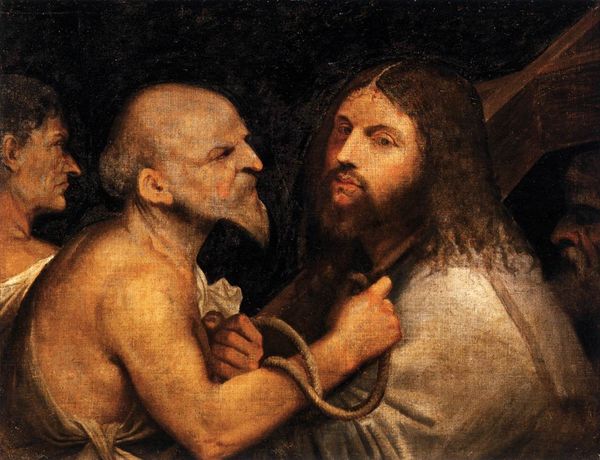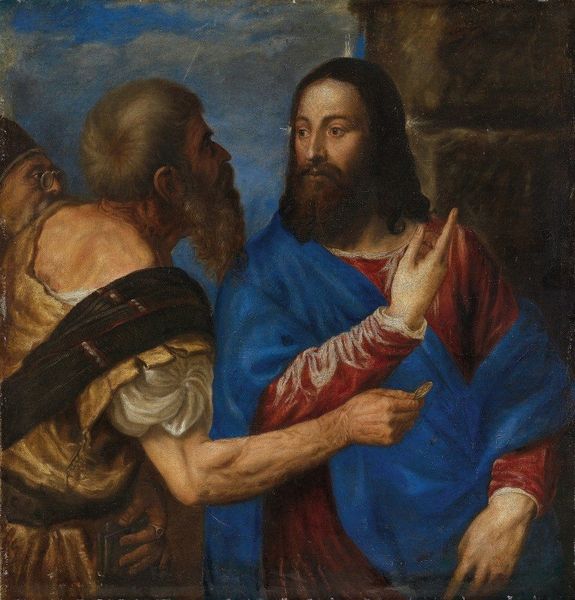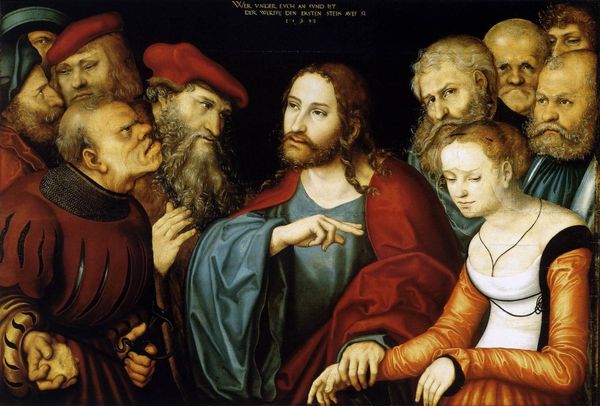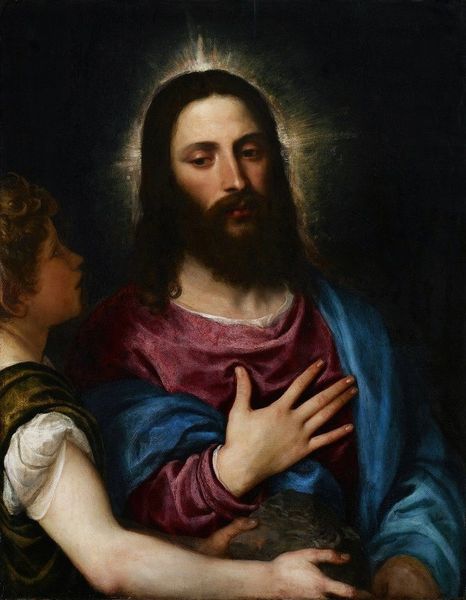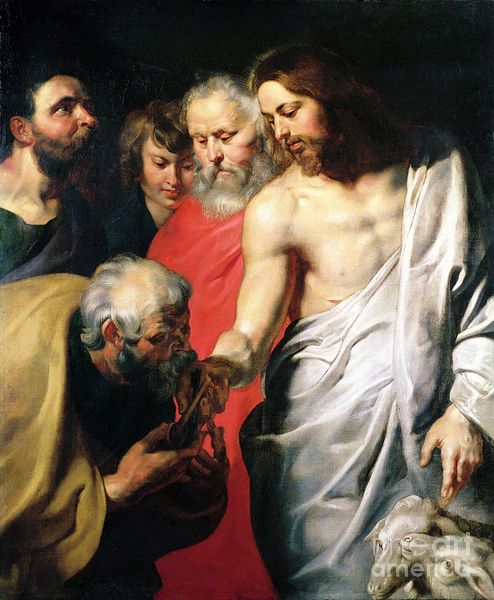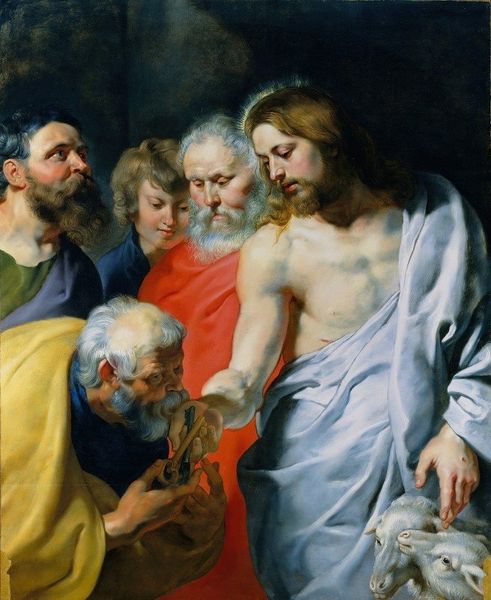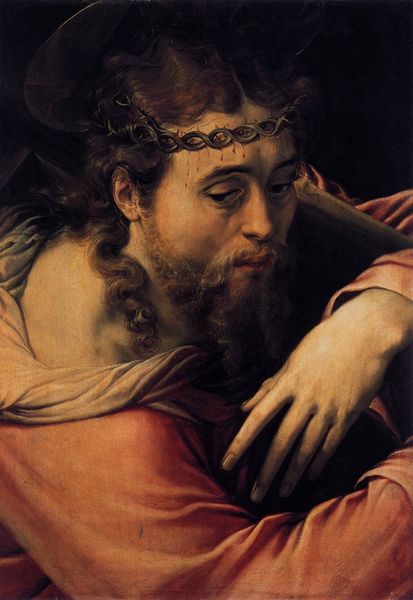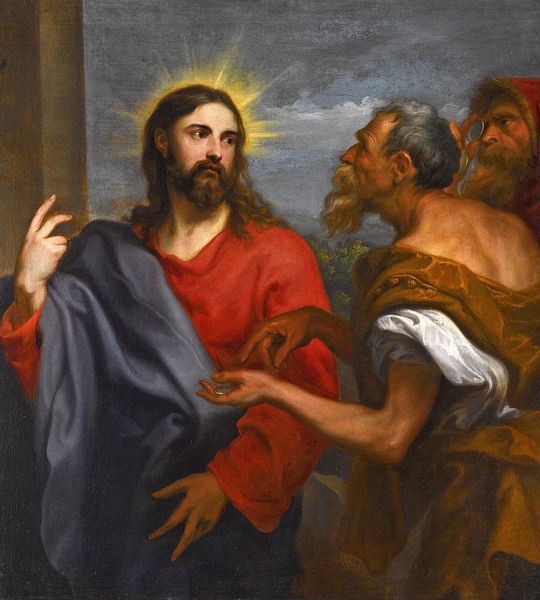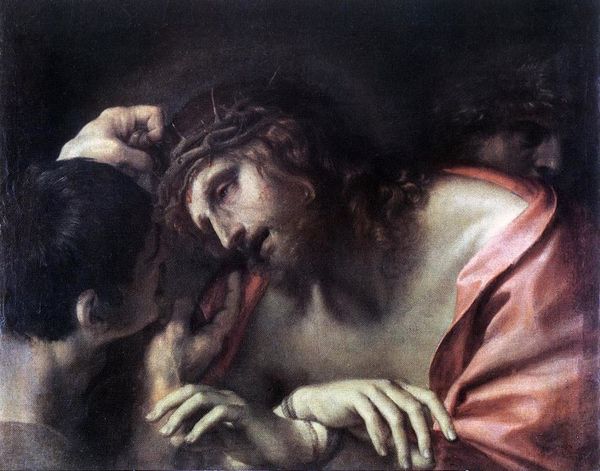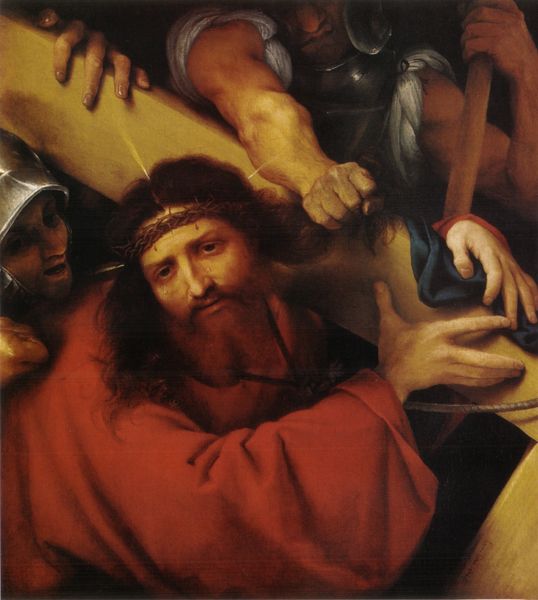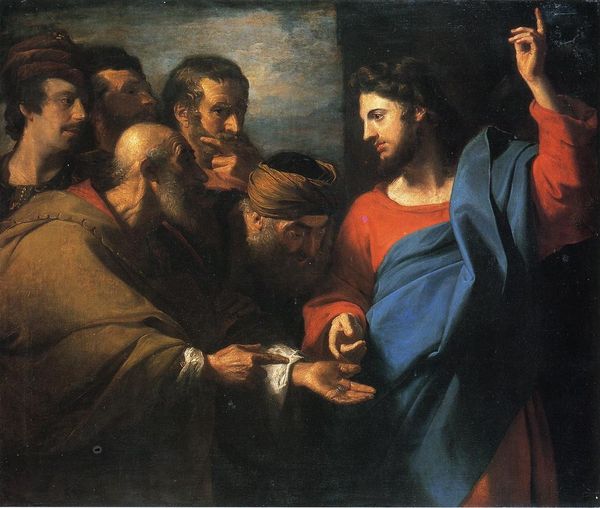
painting, oil-paint
#
high-renaissance
#
portrait
#
painting
#
oil-paint
#
jesus-christ
#
christianity
#
animal drawing portrait
#
history-painting
#
italian-renaissance
#
portrait art
Dimensions: 56 x 75 cm
Copyright: Public domain
Editor: Here we have Titian’s *The Tribute Money* from 1516, an oil painting currently residing in Dresden. The stark contrast between light and shadow gives it a dramatic feel, and there's something unsettling about the man's intense gaze towards Jesus. What can you tell us about this piece? Curator: The intensity you feel is tied to the charged political climate in 16th-century Venice and Europe more broadly. Titian created this for the Camerlenghi, the treasury officials of Venice. The story is from the Gospel of Matthew: Christ is asked whether it is lawful to pay taxes to Caesar and he responds by requesting a coin, asking whose image is on it. The image suggests submission, or belonging, to that authority. Editor: So it's not just a religious scene, but also a commentary on the power of the state? Curator: Exactly. The Camerlenghi, in displaying this in their chambers, are reminding visitors that they serve a powerful earthly authority and embody it. It's fascinating how Titian uses this biblical moment to reinforce the social and political hierarchy of Venice. Editor: I hadn’t thought about how the artwork's location and who commissioned it affected its meaning. The positioning of Christ in the light really does seem like a declaration. Curator: Yes, consider how light was deployed to symbolize knowledge, virtue, divine favor. It is strategic how artists staged their protagonists! We see the message about religious figures being delivered very deliberately by this artist. What are you taking away? Editor: It's eye-opening to consider how much these Renaissance artworks were tools for shaping public perception and cementing social order. Thanks! Curator: Precisely! Looking beyond the surface to uncover these layers adds depth to our understanding of art history and visual culture.
Comments
No comments
Be the first to comment and join the conversation on the ultimate creative platform.
